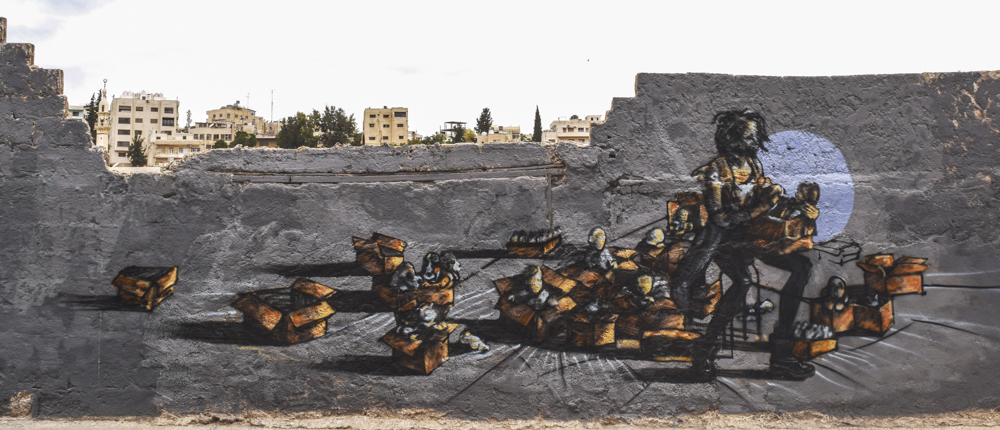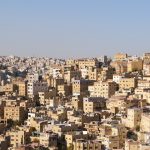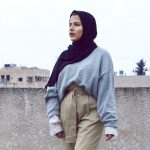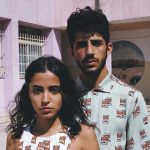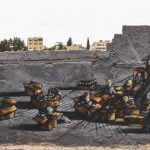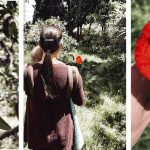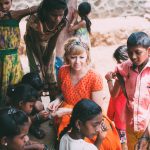STORY BY HEATHER M. SURLS
Heather Surls introduces us to two young artists adding paint to public walls for an annual street art festival in Amman, Jordan. Check here for more of Heather’s reports from life in Amman.
Bayan Kiwan steps back to look at her wall. Two days ago, using rollers and brushes, she coated it in gray paint, mixed from buckets of black and white in a bag-lined box. Yesterday, in spite of multiple May cloudbursts, she painted the figure of a man sitting on a stool. Today, battling a strong breeze, she spray-paints his edges, trying to define him. Now she looks at her work with a critical eye.
“The wall is not cooperating,” she says.
One thing’s for sure: this block wall in Jabal Amman, one of the Jordanian capital’s historic neighborhoods, does not resemble the paper on which she originally put her drawing. Its surface is crumbly and pocked. But like the other artists participating in Baladk, Jordan’s sixth annual street art festival, she’ll have to make it work.
A group of boys approaches Bayan as they leave the elementary school a few meters away. “What is it?” they ask.
“You’ll see,” she answers.
“When will you finish?”
“A few days.”
Bayan and three other artists are painting murals on this street. It’s a narrow one-way between the hill of Jabal Amman and al-balad (downtown), full of cars, trucks, and services, which are white taxis that drive a set route like buses. Drivers pass with open windows, their music blasting as they honk at traffic and occasionally shout to the painters: يعطيكم العافية, “God give you strength!”
Dalal Mitwally is working down the street from Bayan. By day three, she has painted the profile of a woman wearing a black headscarf, with colorful tears crossing her face. Dalal plans to add the text of a poem about mothers by Hafez Ibrahim, one she says most Jordanian kids memorize in elementary school. She feels it’s important to draw this woman, often silenced by society yet “the powerhouse of our society.”
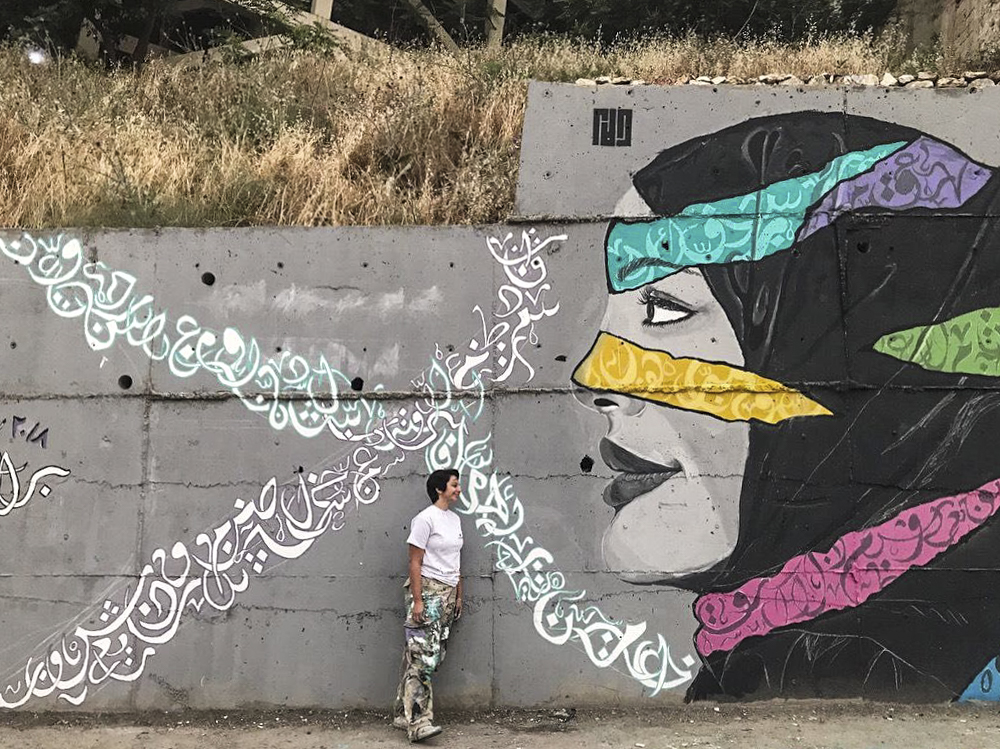
“This is the character you see throughout your life,” she says. “It’s a representation of your caring third grade teacher, or your loving mother, or your kind friend. You find that figure everywhere. It’s not just part of society, it is society.”
Dalal, a computer science student, volunteered with Baladk last year. She finds public art exciting for many reasons. Especially on a busy street like this one, murals and graffiti reach a huge crowd. The artist has no control over who sees it, what they will think, or even what will become of their artwork. It takes thick skin and extreme faith in one’s skills to paint like this, she says.
“It’s for the public,” she says, looking at her half-finished wall. “It’s not for me anymore.”
Bayan is also enjoying the opportunity to paint in public. Recently, while painting for a gallery exhibition, she wrestled with questions like, “Why am I doing this?” and “How is this helping?” Her paintings were so personal, she wondered if they would have meaning for anyone else, or if they were just a joke. She asked herself if being a painter meant she was a selfish elitist.
“It feels like the painting is temporary,” she says of her Baladk wall. “It’s eventually going to wither away, and it’s out there for everyone to see, not just art-goers or rich people. It feels a bit better. I don’t know what it’s doing or if it’s doing anything good, but at least it’s not exclusive.”
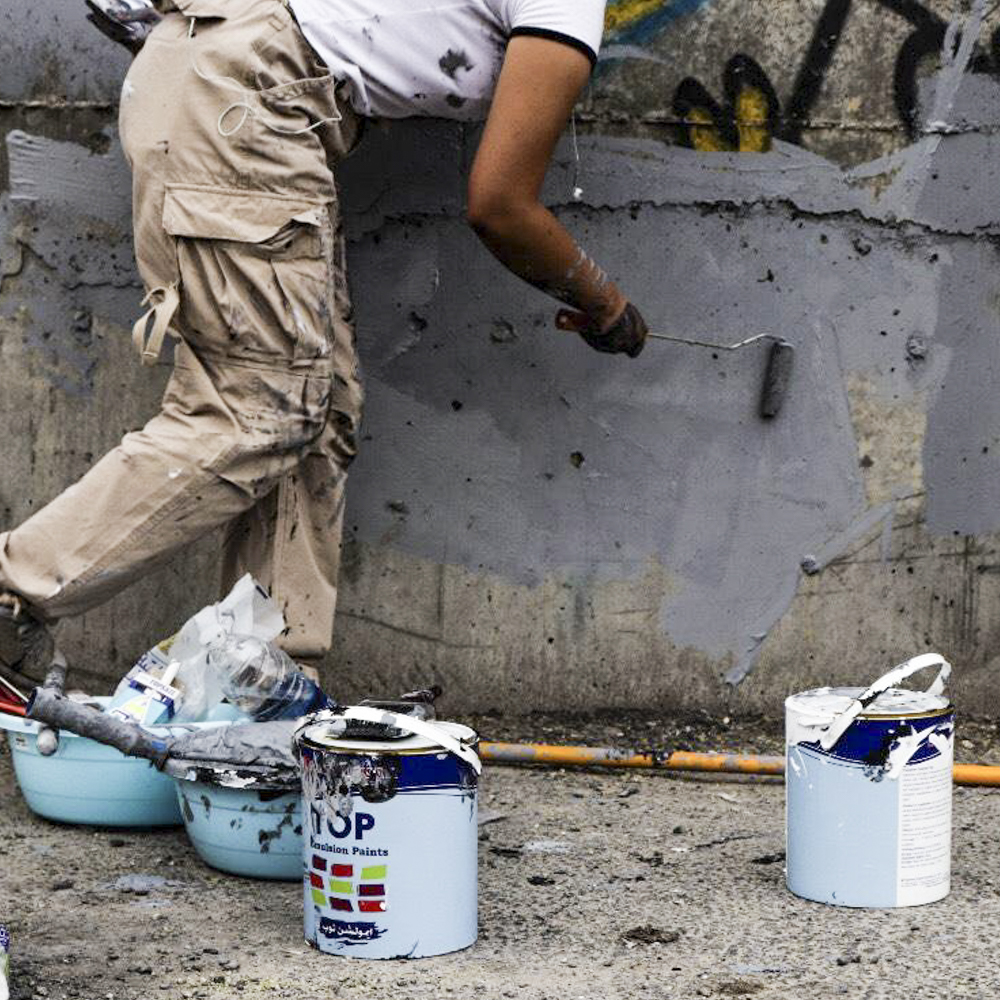
Though Bayan now has a degree in visual arts, her family did not always support her artistic ambitions. Because she got high grades in high school, they expected she would become a doctor or an engineer. According to a widely-held view in this region, being an artist implies that a person is not smart, Bayan explains. Choosing to be a painter is considered a step down the social ladder. After compromising for one semester, though, Bayan changed her major, choosing instead to pursue her passion.
Perhaps art does not require the same skills as doctoring or engineering, but watching Bayan work made it clear that art—and perhaps street art in particular—does require intelligence and flexibility, ingenuity and perseverance.
Late on Friday afternoon, Bayan is finishing her last can of black spray paint. Because her wall was so textured, she ended up drawing everything with spray cans instead of brushes—although she’d never worked with spray paint before.
“I had to make a lot of compromises,” she says. “Now the sketch has nothing to do with it.”
The man on the stool, which the school boys asked about six days ago, holds a box in his lap. In the box is a baby. With his left hand he supports the baby’s head; with his right, he holds a bottle to its mouth. More boxes are scattered around him, holding more babies, puppies, kittens.
The result is mysterious. The brown-gold of the featureless faces glows; the shadows of the boxes fall weightlessly, like real shadows. Babies in boxes. What meaning do they hold? The passersby will have to interpret it, the drivers and pedestrians. After all, this is public art.
On Thursday, her last day of painting, Dalal climbed up and down a ladder, chalking Arabic calligraphy on her wall. An assistant followed her, filling the letters with white paint.
It’s not the poem as originally planned, she said. She tried putting the poem beside her woman’s profile, but the stiff, blocky stanzas didn’t look right beside the flowing letters painted in her scarf. So Dalal scrapped the poem and opted for random letters set in a curving pattern.
How does she feel about the finished product? From where she sat on the roadside, wearing cargo pants that had themselves become a work of art, Dalal looked up and smirked. “No artwork in the world is ever done in the eyes of the artist,” she said. “There is never a finished piece.”
In addition to serving as Anthrow Circus's assistant editor and proofreader, Heather Surls regularly contributes stories to the site, drawing inspiration from her relationships and experiences in Amman, Jordan. Her reporting and creative work have also appeared in places like Religion News Service, Christianity Today, Hidden Compass,Catamaran, Brevity, River Teeth, and Nowhere. Her first book, a memoir-in-essays about a decade in the Middle East, releases from Lucid Books in Summer 2025.

